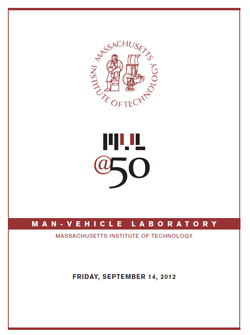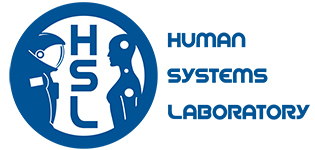
The MIT Human Systems Laboratory (called the Man Vehicle Laboratory at the time) celebrated its fiftieth anniversary with a day-long symposium and celebration on the subject of human-vehicle interactions, on Sept. 14, 2012. The Symposium traced the people and research streams over a half century – from Doc Draper’s earliest desires to have us describe pilots as components of a control loop, through study and modeling of the balance mechanism of the inner ear and its role in aircraft and spacecraft control, to extensive space flight experiments.
Over 200 graduate theses and over 900 publications have documented the research – and the HSL has emerged as a leading international force in space life sciences. Over the first 50 years we brought models of vestibular function to the control of moving base flight simulators. We developed devices and procedures to measure posture and eye movements. We used flight simulators to develop air traffic avoidance and pilot workload measures. We investigated human balance and biomechanical reactions on over a dozen space missions, from Shuttle and MIR to the ISS, and sent a member of our lab to space as America’s first Payload Specialist. We provided the human factors and life support for the record breaking Daedalus man-powered flight. We are developing a BioSuit™ prototype advanced space suit and applied artificial intelligence to assist astronauts doing scientific experiments. Together with our colleagues at the Charles Stark Draper Lab and at the Massachusetts Eye and Ear Infirmary we continue to explore advanced applications of control theory to human reactions – whether of patients or of astronauts.
The program for the September 14th gathering, as well as Larry's memoirs of the past half century at the lab and a full list of theses and publications, is in the MVL@50 booklet which can be obtained upon request. (~15Mb document)
Relive the event from the video captured by MIT TechTV!
